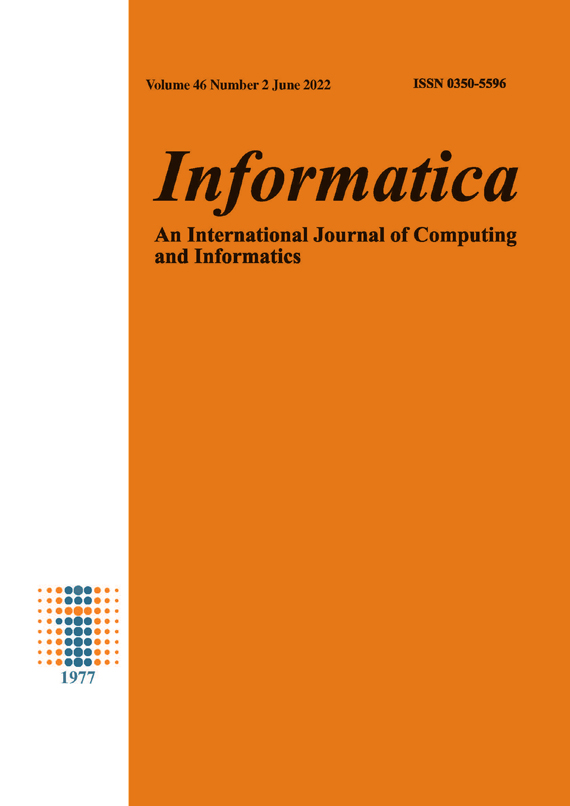Remote Monitoring of Lab Experiments to Enhance Collaboration between Universities
DOI:
https://doi.org/10.31449/inf.v46i2.3840Abstract
LabView is used to design the system to monitor and control lab experiments remotely over the Internet. Web based embedded system is designed and presented in this paper along with required hardware to perform experiments remotely in allocated time slot. A unique system is designed to monitor and control room temperature remotely. To assess the performance of the designed system and the hardware, an experiment is designed to control room temperature remotely. The Temperature Control System (TCS) publish over the internet by using web server along with embedded live video of the equipment to control and change various required variables. LabView and the equipment from National Instruments is used to perform the experiment and the designed system can be controlled anywhere from the planet by using secure login detail only which exist in the database of server. As the experiments take long time to be completed and during this time the performer need to be presented in the Lab. By implementing this type of system, it will save the time of the performer and it can be utilized in other activities. Also by designing and implementing this approach students from other Universities can also utilized the hardware and collaboration between institutions will be enhanced. The designed system presented in this article shows promising results which are presented in coming sections of this paper. The performed experiments are recorded and banked in the repository of the institution for future reference along with results.
References
References
Caragliu, A.; Del Bo, C.; Nijkamp, P. Smart cities in Europe. J. Urban Technol. 2011, 18, 65–82.
Ishida, T.; Isbister, K. Digital Cities: Technologies, Experiences, and Future Perspectives; Number 1765; Springer Science & Business Media: Berlin, Germany, 2000.
Alshmrany, Sami & Ali, Arshad “Health Monitoring and Management System by Using Wireless Sensor Network and Internet of Things (IoT)”, VOL.19 No.12, December 2019, 179-184
A. Bouroumi and R. Fajr, “Collaborative and Cooperative E-learning in Higher Education in Morocco: A Case Study,” Int. J. Emerg. Technol. Learn. IJET, vol. 9, no. 1, p. 66, Feb.2014. https://doi.org/10.3991/ijet.v9i1.3065
Wang Ping, Wang Zheng. Design and Implementation of Open Computer Lab Monitoring and Management System [J]. Computer and Modernization, 2007,11: 125-128.
Jing Li, Yong Xu. Remote Monitoring Systems Based on Embedded Database [C]. Third International Conference on Genetic and Evolutionary Computing. 2009 :381-384.
M. A. Bochicchio and A. Longo, “Hands-On Remote Labs: Collaborative Web Laboratories
as a Case Study for IT Engineering Classes,” IEEE Trans. Learn. Technol., vol. 2, no.4, pp. 320–330, Oct. 2009. https://doi.org/10.1109/tlt.2009.30
Asraf, H.M. & Dalila, Nur & Zakiah, M.Y. & Faiz, Z.A. & Tahir, Nooritawati. (2018). Computer assisted e-laboratory using LabVIEW and internet-of-things platform as teaching aids in the industrial instrumentation course. International Journal of Online Engineering. 14. 26-42. 10.3991/ijoe.v14i12.8992.
Donose, Costel & Schreiner, Cristina-Mihaela & Macovei, Stefan. (2018). Using the Virtual Online Laboratories for the pre-University. 0609-0613. 10.1109/ICEPE.2018.8559617.
Chew A.S 1997, Development of a Feedback System for Position Control, Western Australia, Perth
Davies T., Chan D. 2002 Network Cameras versus Streaming Video, Vacation work project, The University of Western Australia, Perth
Herrera O.A., Alves G.R., Fuller D., Aldunate R.G. (2006) Remote Lab Experiments: Opening Possibilities for Distance Learning in Engineering Fields. In: Kumar D., Turner J. (eds) Education for the 21st Century — Impact of ICT and Digital Resources. IFIP WCC TC3 2006. IFIP International Federation for Information Processing, vol 210. Springer, Boston, MA . https://doi.org/10.1007/978-0-387-34731-8_38
Downloads
Published
Issue
Section
License
I assign to Informatica, An International Journal of Computing and Informatics ("Journal") the copyright in the manuscript identified above and any additional material (figures, tables, illustrations, software or other information intended for publication) submitted as part of or as a supplement to the manuscript ("Paper") in all forms and media throughout the world, in all languages, for the full term of copyright, effective when and if the article is accepted for publication. This transfer includes the right to reproduce and/or to distribute the Paper to other journals or digital libraries in electronic and online forms and systems.
I understand that I retain the rights to use the pre-prints, off-prints, accepted manuscript and published journal Paper for personal use, scholarly purposes and internal institutional use.
In certain cases, I can ask for retaining the publishing rights of the Paper. The Journal can permit or deny the request for publishing rights, to which I fully agree.
I declare that the submitted Paper is original, has been written by the stated authors and has not been published elsewhere nor is currently being considered for publication by any other journal and will not be submitted for such review while under review by this Journal. The Paper contains no material that violates proprietary rights of any other person or entity. I have obtained written permission from copyright owners for any excerpts from copyrighted works that are included and have credited the sources in my article. I have informed the co-author(s) of the terms of this publishing agreement.
Copyright © Slovenian Society Informatika








